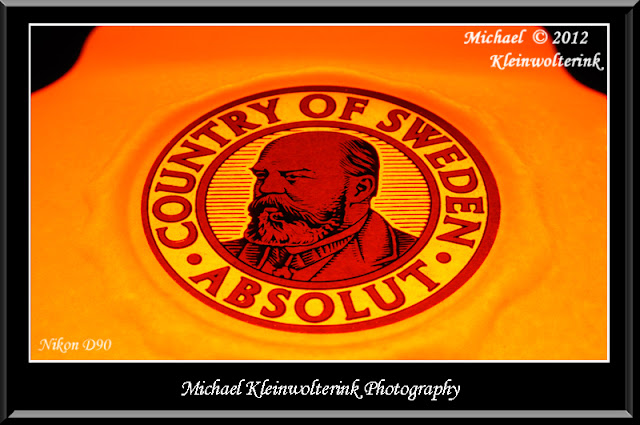I used a wide range of equipment to get these close up
images of the bottles and it all started with the D90 on the Slik 500DK tripod
in RAW mode and using f6.3 to f16 in aperture priority mode. ISO was either set
at 200 or 400 to keep noise low. The lenses used were Nikon 18-105mm, Nikon
70-300mm and the Sigma 50-150mm. I used the Zeikos extension tubes on these
lenses to fill the frame with the bottle or Absolut logo itself. All autofocus systems were turned off along
with VR on the lenses.
The excitement of this “product” shoot on Absolut bottles
was these were taken with no lights on in the basement. The Nikon SB-700 lit up
the bottles by using it as a remote flash unit. This allowed me to manually
adjust the flash output from 1/1 all the way down to 1/128 if desired along
with changing the position of the flash to light up the bottles. To change the “warmth” of the flashes light
discharge, the incandescent and diffusion filters were used. Food coloring in
the bottles filled with water helped create different colored bottles and a very
neat illusion.
ViewNX was used to process the RAW files by changing the
picture control to the custom curves of Landscape-Nature and Mono Snow Goose
that I created a while back and use often. Since the flash did a great job of
lighting up the subject, exposure compensation and shadow/highlight sliders
were seldom used.
A little work was done in PSE8 by straighten the images and
cropping them after I finalized them in ViewNX. A few scratches and other lines
on the Absolut bottles were cloned out using the cloning brush tool.
After taking these images, I can see that the
SB-700 will get a workout on my camera or off the camera as I continue to learn
how and when to use it to help with lighting conditions. #1.
#2.
#3.
#4.
#5.
#6.
#7.
#8.
#9.
#10.
#11.
#12.
#13.
#14.
#15.
#16.
#17.
#18.
#19.
#20.
#21.
#22.
#23.
#24.
#25.
#26.
#27.
#29.





























No comments:
Post a Comment